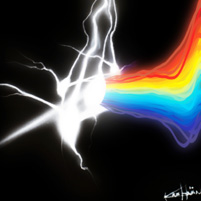Neuronal Diversity

Much like snowflakes, no two neurons are exactly alike. But it's not their size or shape that sets them apart, it's the way they respond to incoming stimuli.
Carnegie Mellon University researchers have discovered that this diversity is critical to overall brain function and essential in how neurons process complex stimuli and code information. The researchers published their findings, the first to examine the function of neuron diversity, in Nature Neuroscience.
Estimates say that the human brain alone has upwards of 100 billion neurons, which can be broken down into a number of different types. While members of the same type look structurally alike, and, as a group, contribute to completing the same overall task, each individual neuron in that group fires in response to subtle differences in the incoming stimulus.
"Diversity is an intrinsic good," said Nathan Urban, professor and head of CMU's Department of Biological Sciences. "A population in which each member is a little different — in terms of what they can do — is a more efficient and more effective population. It's like a baseball team — if you want to win, you shouldn't put nine pitchers on the field."
Urban and postdoctoral student Krishnan Padmanabhan, both researchers in CMU's Department of Biological Sciences and the joint CMU/University of Pittsburgh Center for the Neural Basis of Cognition, tested single neurons' responses to a complex stimulus.
By placing an electrical probe into individual excitatory neurons called mitral cells and exposing them to a complex computer-controlled noise stimulus, the researchers were able to determine how each cell responded. They found that out of the dozens of neurons they tested, no two had the exact same response.
"I think neuroscientists have, at an intuitive level, recognized the variability between neurons, but we swept it under the rug because we didn't consider that diversity could be a feature. Rather, we looked at it as a fundamental reflection of the imprecision of biology," said Urban. "We wanted to reconsider that notion. Perhaps this diversity is important — maybe it serves some function."
The researchers believe neuronal diversity could play a role in neurological disorders like epilepsy, Parkinson's disease and schizophrenia. In these conditions, there is a disruption in the synchrony and rhythm of neuronal firing.
This research was funded by the National Institute on Deafness and Other Communication Disorders, one of the National Institutes of Health.
Painting courtesy of Krishnan Padmanabhan, Carnegie Mellon University.
Pictured: painting by Krishnan Padmanabhan
Related Links: Read the Press Release | Mellon College of Science
